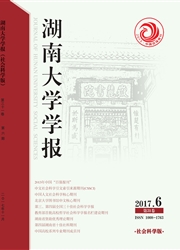

 中文摘要:
中文摘要:
选取了1999年至2008年我国30个省市农村数据,分别构建静态和动态面板数据分析模型,对交通基础设施投资与居民收入之间的关系进行实证分析。静态面板数据模型的估计结果显示,短期内交通基础设施投资对农村经济的发展能够产生直接的经济效应,促进农民增收;动态面板数据的结果则表明,交通基础设施投资所带来的农村交通设施条件的不断改善,将在一定程度上促进农民收入的长期稳定增加。进一步地,将两类模型的估计结果予以对比分析发现,农村基础设施投资促进农村居民收入增加的短期效应将高于长期效应。
 英文摘要:
英文摘要:
This article selects rural data from 1999 to 2008 of 30 provinces and municipalities of our country to build static and dynamic panel data model respectively,empirically analyzing the relationship between transportation infrastructure investment and residents' income.Static panel data model estimates show that transportation infrastructure investment has direct short-term effects on rural economic development.While dynamic panel data model estimates reveal that transportation infrastructure investment can improve the condition of rural transportation infrastructure,then,to a certain extent,increasing rural residents' income steadily in the long run.Furthermore,comparing the two different estimates,this article shows that the short-term effects of transportation infrastructure investment on increasing residents' income are higher than the long-term effects
 同期刊论文项目
同期刊论文项目
 同项目期刊论文
同项目期刊论文
 期刊信息
期刊信息
